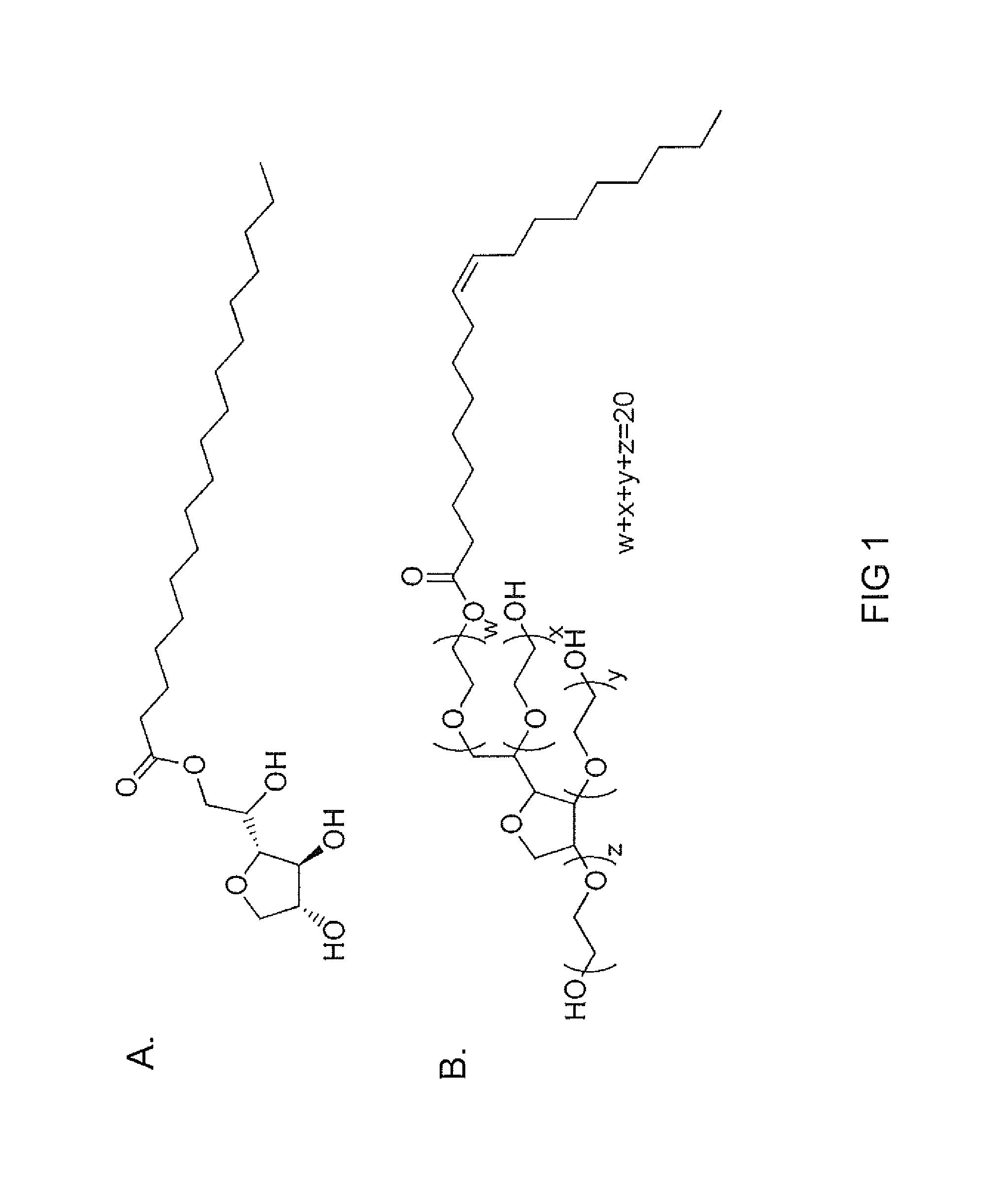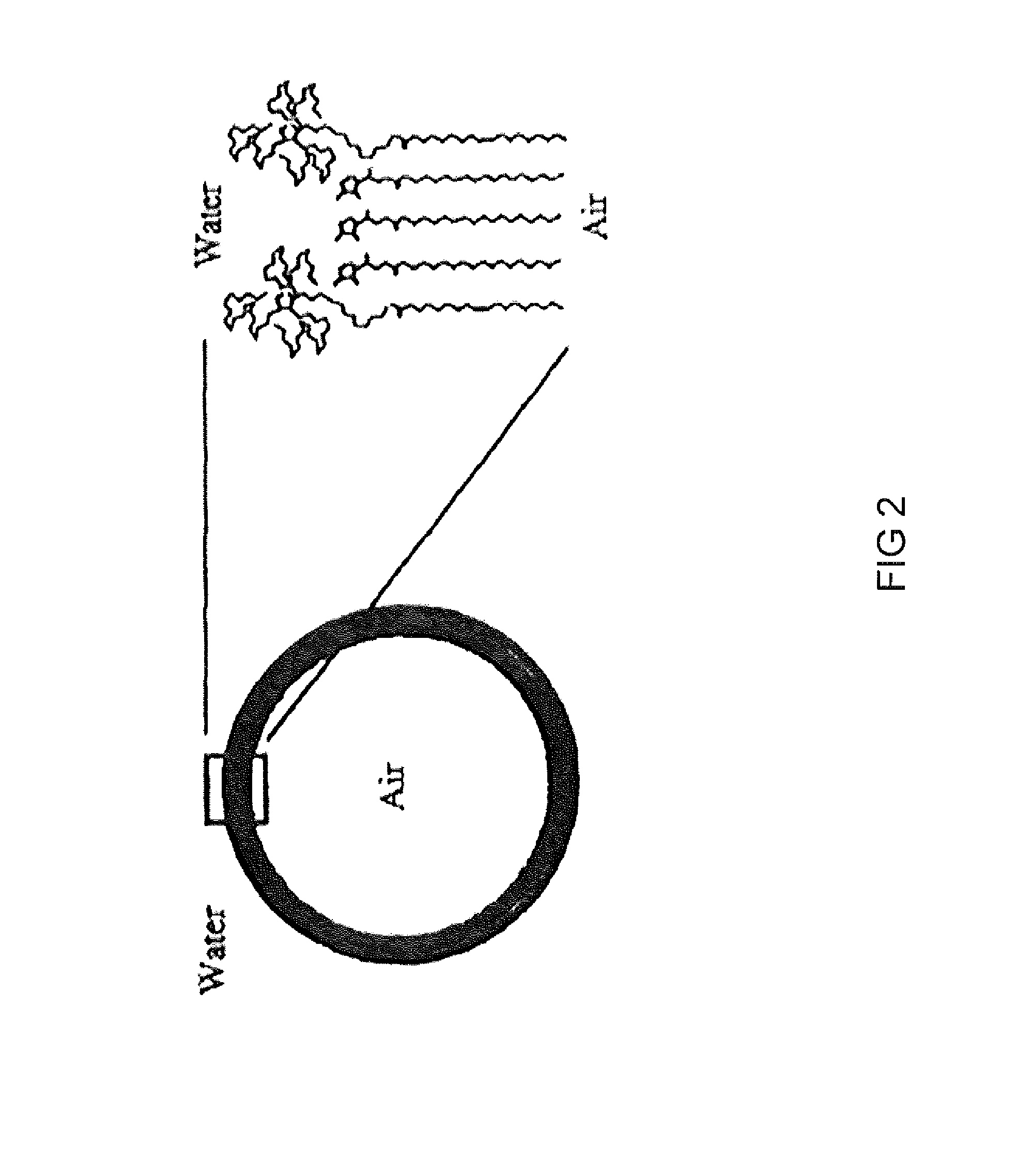Stabilized Ultrasound Contrast Agent
- Summary
- Abstract
- Description
- Claims
- Application Information
AI Technical Summary
Benefits of technology
Problems solved by technology
Method used
Image
Examples
experimental examples
[0083]The invention is further described in detail by reference to the following experimental examples. These examples are provided for purposes of illustration only, and are not intended to be limiting unless otherwise specified. Thus, the invention should in no way be construed as being limited to the following examples, but rather, should be construed to encompass any and all variations which become evident as a result of the teaching provided herein.
experimental examples 1-4
[0084]The materials and methods employed in Examples 1-4 disclosed herein are now described.
[0085]Surfactants
[0086]The surfactants for this study are three non-ionic surfactants, of which two surfactants are fatty acid esters of sorbitan (SPAN and TWEEN) and the third is water soluble vitamin E, (d-α-tocopheryl polyethylene glycol 1000 succinate: TPGS). The potential compositions include combinations of SPAN / TWEEN, SPAN / TPGS and SPAN / TWEEN / TPGS. The different surfactants in various combinations, in various concentrations, and encapsulating different gases (air, sulfur hexafluoride (SF6) and perfluorocarbon, (PFC)) will dictate the packing density and strength of inter-molecular forces around the gas. The agents will be optimized / characterized in vitro for stability and echogenicity.
[0087]A mixture of two non-ionic surfactants, SPAN and TWEEN, was used to stabilize gas bubbles. Both surfactants are fatty acid esters of sorbitan, which can have a hydrophobic tail group, for example mo...
experimental example 1
Particle Stabilized Microbubble Foams as Ultrasound Contrast Agents
[0109]It was observed that stable microbubbles can be formed only with a solid SPAN, i.e, SPAN 40 and SPAN 60, mixing with TWEEN. The mixture of SPAN 20, a liquid form, with TWEEN or TWEEN alone did not give stable microbubbles, which agrees with the study of Wheatley and Singhal, 1995, Reactive Polymers 25:157-166. For this reason, it is possible that the stability of gas bubbles can be modeled as solid particle-stabilized bubbles not a mixture of free surfactants.
[0110]The foam can be prepared by adding the desired amount of surfactant(s) to 25 ml phosphate buffered saline (PBS). The solution is then stirred and heated for 3-5 min until boiling or until the surfactant(s) is completely dissolved. The solution is then sterilized for 35 min at which point it is cooled to room temperature. To generate the foam, the 15 ml of the solution is sonicated at maximum power for 3 min. The 20 ml of foam is pour into 25 ml gradu...
PUM
 Login to View More
Login to View More Abstract
Description
Claims
Application Information
 Login to View More
Login to View More - R&D
- Intellectual Property
- Life Sciences
- Materials
- Tech Scout
- Unparalleled Data Quality
- Higher Quality Content
- 60% Fewer Hallucinations
Browse by: Latest US Patents, China's latest patents, Technical Efficacy Thesaurus, Application Domain, Technology Topic, Popular Technical Reports.
© 2025 PatSnap. All rights reserved.Legal|Privacy policy|Modern Slavery Act Transparency Statement|Sitemap|About US| Contact US: help@patsnap.com



